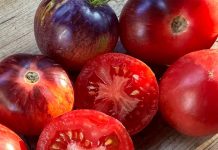Yogurt, miso, sauerkraut, tempeh, kefir, poi, natto, kimchi and kombucha are just some of the examples of fermented foods eaten around the world.
By eating fermented foods, we help build the microflora in the gut for better health and digestion. Yogurt is the most popular food that builds the gut flora in our western culture (taking probiotic supplements is also popular). But many people don’t know that the type and quality of the bacteria used is very important to its effectiveness.
Probiotics are the good bacteria, officially called microbiome, roaming the human gut in great numbers. (There are about 100 trillion bacterial cells in there, which is 10 times more than all the cells in the human body!)
Unlike the bad bacteria that make the body sick, good bacteria are necessary for the body to function, in more ways than science has ever understood. Processed foods kill off these friendly bacteria as well as the over-use of antibiotics.
With new probiotic supplements hitting the market every day and the term prebiotic popping up everywhere, gut health needs some explanation.
Jason Tetro, microbiologist, Bio-K+ advisory board member and author of “The Germ Code” and “The Germ Files,” recently answered several questions about probiotic for the NB Indy.
Q: How important is it to eat fermented foods? Daily? Weekly?
A: Fermented foods should be eaten at least a few times a week. If you look at a diet that recommends this, the Mediterranean Diet, the goal is to ensure the bacterial population is maintained. Since many of the good bacteria we ingest only last about 2-3 days in our intestines, the timing is perfect.
Q: How do probiotics and fermented products work together?
A: Both fermented foods and probiotics are using, for the most part, the same types of bacteria. They are called lactic acid bacteria and have names such as Lactobacillus acidophilus, Lactobacillus casei, and Lactobacills rhamnosus. When we ingest these products together, the bacteria synergize and ensure we are getting a number of benefits ranging from a balanced immune system and better digestion to improved cardiovascular health and even improved mental health.
Q: What are the most effective bacteria to have in your gut? Bifidus? Acidophilus?
A: The key is to ingest lactic acid bacteria. They are excellent for preserving foods but they also offer a number of health benefits. The most common are Lactobacillus. As the name implies, they are responsible for fermenting lactose. There are numerous species but most of the benefit comes from only a few. The ones I mentioned earlier have been proven in clinical trials to help us improve our health and even evade certain diseases such as C. difficile.
Q: How do live active bacteria stay alive?
A: Bacteria need three things to survive: water, food, and a suitable environment. Inside a fermented product, the water and food is plentiful. As for the environment, if it gets too warm, the bacteria will use up all the food and eventually die off. When it’s cool such as in a refrigerator, the bacteria slow down and take much longer to use up the food resources and therefore last much longer.
When a bacterium is in a solid environment, such as a capsule, there is no water or food so they can only remain alive for a certain period of time. How long they last depends on how they are prepared. They are usually freeze-dried so they remain active but have a limited shelf-life Most supplement products require refrigeration to allow them to stay alive for months. But some are designed with added ingredients to allow the bacteria to survive at warmer temperatures. This is excellent for anyone wishing to travel with their probiotic supplements.
Q: What is the difference between liquid and capsule probiotics?
A: It’s essentially water. When you take a liquid probiotic, the action can be immediate. When you take a capsule, you have to wait for the bacteria to rehydrate before they can begin to act. In the human body, this is about one to two hours.




